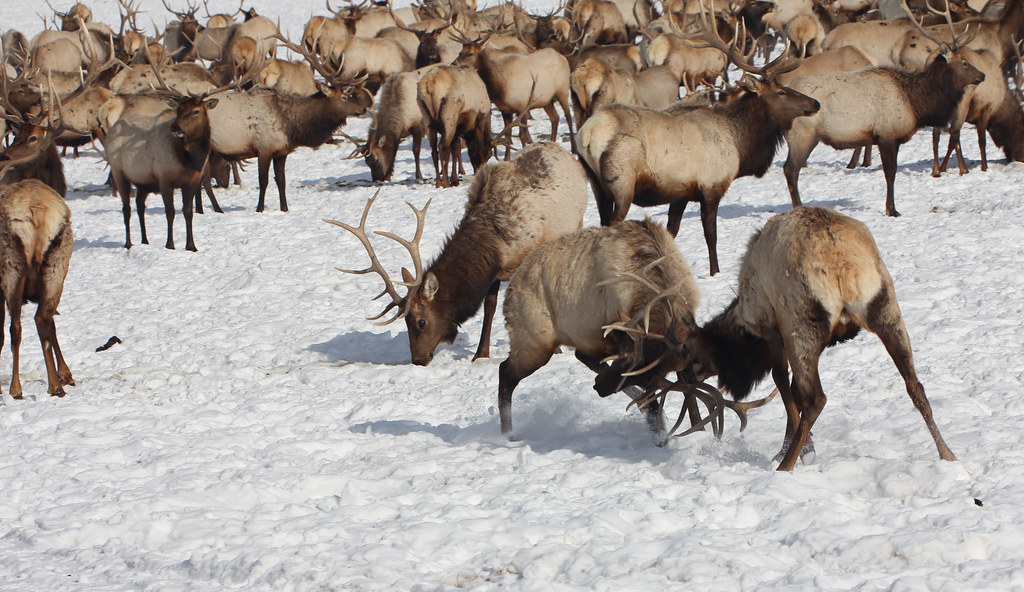It is during the breeding season in the fall that bucks are most active. With the leaves turning amber, orange, and crimson, buck activity goes into overdrive.
Their testosterone levels rise, and they become preoccupied with finding as many does as possible. During the rut, bucks travel several miles a day and are more visible during daylight.
Additionally, they become more vocal and rub their antlers against trees to mark their territory. However, it’s important to note that many factors, such as weather patterns and food availability, can also affect the activity levels of bucks. However, fall is the best time to see these magnificent creatures.

Credit: en.wikipedia.org
Contents
How Bucks Work: The Basics
Hunting bucks at their most active is crucial. Bucks are most active during breeding season. North American autumn usually falls between October and November. Bucks actively seek out does to mate with during the rut.
As bucks prepare for the winter, they may be less active outside of the rut. In other seasons, bucks may still be active, especially during feeding seasons.
Locations and species may exhibit different activity patterns. Understanding buck habits requires field observation and research of deer behavior.
The Mating Season for Bucks: Buck Rutting
The rutting season is the mating season for male deer. These bucks become more active and on the hunt during this time of year, usually in October and November. The male deer instinctively finds and mates with female deer who are in heat during this period.
Females are attracted to buck’s vocalizations and scents. It is also during this time that bucks become more territorial and aggressive. During rutting season, it’s a good idea to be cautious when approaching rutting bucks.
Watching from a distance is always a good idea. Therefore, if you’re a hunter, this is the perfect time to capture a buck in action.
Seasons And Buck Activity
Deer hunting enthusiasts are curious about the most active time of year for bucks. Their curiosity is not unfounded, as timing is crucial when it comes to hunting. Bucks are most active during the fall season, particularly around the rutting time.
As breeding season approaches, bucks become more territorial, and their activity levels peak. Autumn weather also plays a role in buck activity. Cooler temperatures tend to make them more active and engage in more physical activities, such as sparring. It is crucial to know the time of year when bucks are most active to optimize your chances of having a successful hunting season.
Additionally, understanding and respecting their behavior patterns can help foster healthier populations in the long run.
Weather And Buck Activity
Deer activity is greatly influenced by the weather. Temperature, precipitation, and sunlight affect deer activity. Bucks breed best in the fall and winter.
During this period, bucks tend to defend their territories and find mates. During the rut, they may also be more active. In hot summer months, bucks may retreat to cooler, shaded areas to avoid the heat.
Planning a hunting trip requires an understanding of local weather patterns. Weather forecasts and bucks’ behavior are essential for the best hunters.

FAQ About When Are Bucks Most Active?
Are Bucks More Active During Certain Seasons?
Bucks are more active during mating seasons in the fall and winter. In the late afternoon and early morning, they are also more active.
Is a 30-30 rifle suitable for hunting elk?
A 30-30 rifle’s success depends on several factors. Larger game like elk may not be suitable for the 30-30 caliber. In close quarters or thick vegetation, 30-30 rifles can still work well. Hunting style and conditions are key.
What Time Of Day Are Bucks Most Active?
Bucks are most active during crepuscular hours, which refers to the time periods of dawn and dusk. These times are usually an hour before sunrise and an hour after sunset.
Do Bucks Stay Active During Hot Weather?
During hot weather, bucks are less active during the day and more active at night. They tend to seek shelter during the middle of the day and become more active in the cooler hours of the evening and early morning.
Are Bucks More Active In Urban Or Rural Areas?
Bucks tend to be more active and have larger populations in rural areas with more forested habitats. However, they can also be found in urban areas with parks and green spaces, especially during non-hunting seasons.
Conclusion

